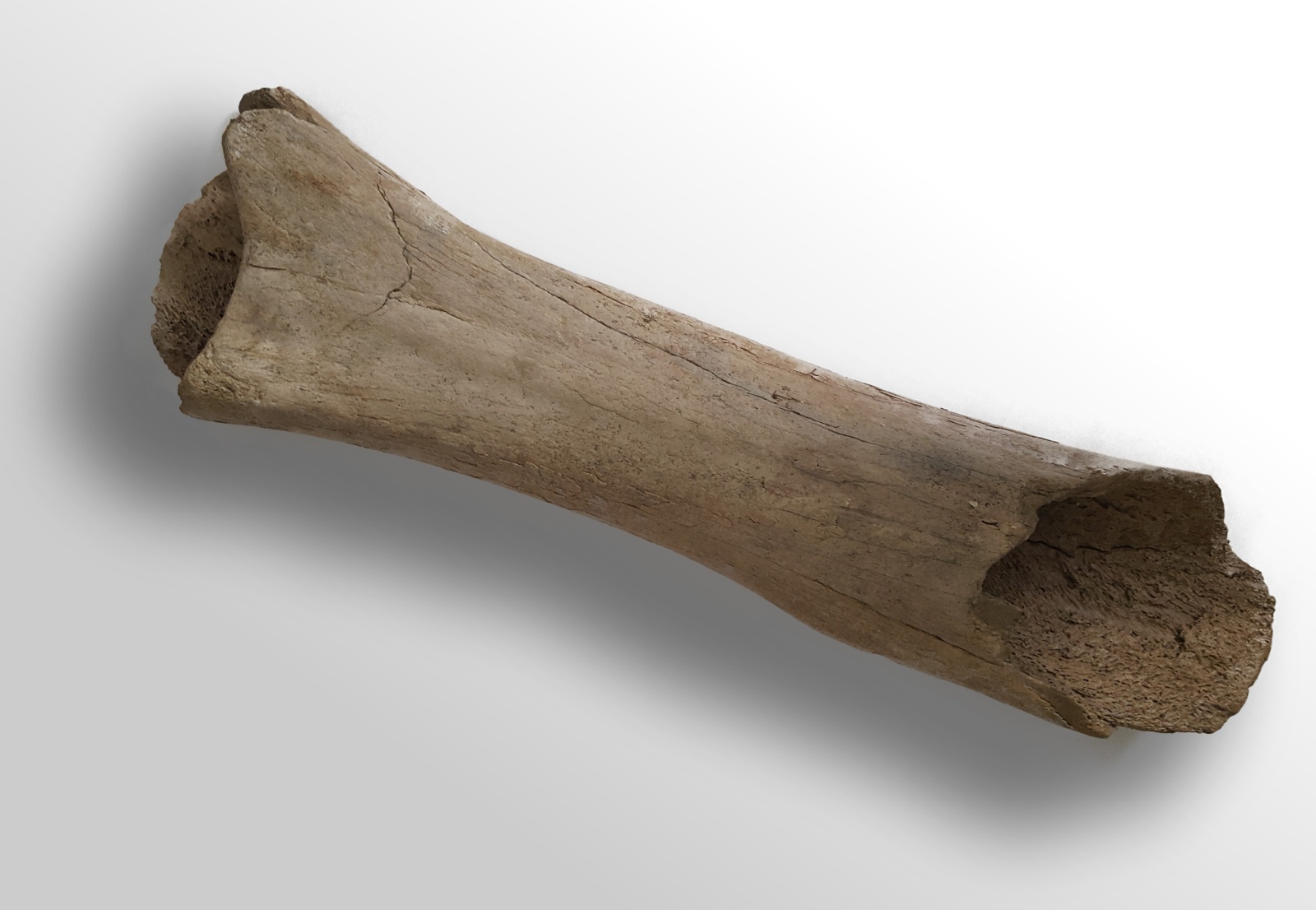The Slovenian Museum of Natural History houses numerous precious items in its collections, correlated to some very interesting stories. It doesn’t happen very often that the path of a museum piece is so well documented as the fossilized remains of a proboscidean thighbone found along the Drava River in the vicinity of Borl Castle. The discovery was made possible thanks to a series of coincidences: on 9 August 1978, during the construction of a bridge over the Drava River, the river exposed 77-centimetre-long remains of an elephant’s thighbone at the foot of the Castle. The river most likely tore out the fossil bone from its alluvium and deposited it rough on the gravel bar. An angler found it and reported on his discovery to the Head of Cirkulane Primary School, who in turn immediately made a report on the find of possible mammoth fossil to Franc Cimerman (1933-2015), the Museum’s geological and palaeontological curator. On the very next day, Cimerman took a field trip to Borl to prepare a written documentation of the site and the correspondence regarding the find with its finders, as well as to take care of the museum inventory and the bone’s consolidation. The bone, however, simply “disappeared” from the museum after the collection was moved and could not be found for a whole couple of decades. In 2008, it was rediscovered in the Museum by palaeontologist Katarina Krivic and a bird watcher who – by a surprising coincidence – was also present when the bone was found! Although the bone is misidentified as a mammoth in the collection today, Cimerman believed that it could be a mastodon thighbone. Will perhaps the Borl extinct elephant be “granted” a species designation by the third custodian of the collection since the discovery of the bone? With such interesting stories, we should yet again become aware of the importance of museum collections, which are no doubt an invaluable treasure and nature’s archive.
Text by: Borut Štumberger


